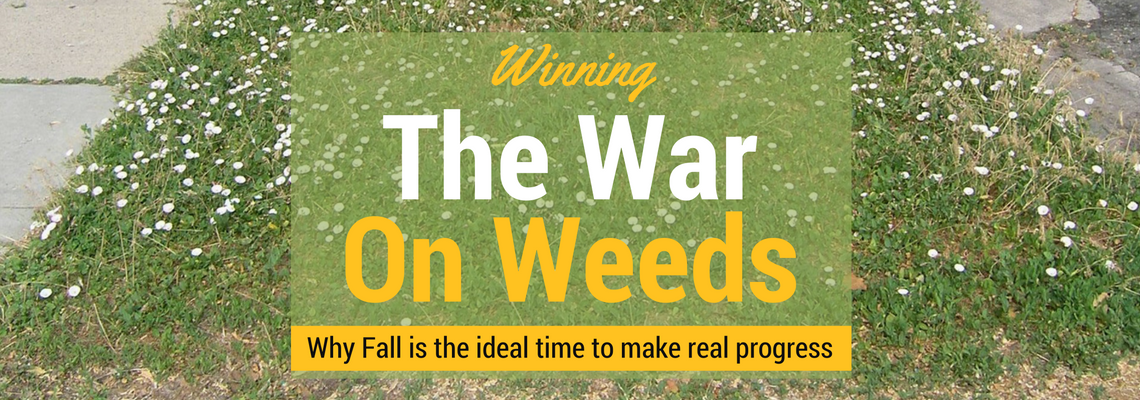
Winning the Fall Weed War
-

For most gardeners, the war with weeds begins when late-winter snow melts, revealing the first wave of weed invaders. Armed with spade, hoe, and bottles of weed killer, the battle is joined by brave gardeners, intent on making a difference in their yards that year. Summer brings casualties on both sides, but the weeds gain ground as summer heat wicks away the energy of even the most seasoned garden warrior.
By the time cool autumn temperatures prevail, most gardeners are ready to put their landscapes to sleep and wait until the next spring to begin again. However, fall is one of the best times of year to bring the battle back to the weeds in all its sap-spilling ferocity.
For perennial weeds, some of the most ruthless and long-lasting of the invaders, fall can be especially deadly. Perennial weeds are those that survive from year-to-year, usually by hibernating through the winter while using resources they store in roots. Some of the most recognizable perennial weed enemies are; field bindweed (a.k.a. morning glory), dandelions, common mallow, white top, black medic, and nightshade. -
These weeds are so successful because their roots have adapted to survive weed control efforts. Most perennial weeds have developed stems that easily detach from their roots when pulled. In addition, their roots are usually large and hold lots of nutrients that allow them to avoid severe injury from pulling and even herbicides and regrow quickly. Also, many of these weeds spread via their roots and can form colonies quickly if uncontrolled.
Though they are formidable foes, never fear. Conquering these weeds is possible, but it takes time, consistency, and an unquenchable burning hatred. Since their strength is in their roots, the first priority is to control the roots. Although protected by soil, roots are most vulnerable in the fall. -

-
Autumn is a critical time for perennial weeds. Their upward and outward growth slows with the cool temperatures and they begin to draw nutrients down into their roots in order to survive the winter with enough energy to make a big push again in the spring. This means that systemic pesticides, like glyphosate (RoundUp) and 2,4-D, that are applied in the fall have a greater chance of ending up in the roots with enough killing potency to prevent regrowth with the return of spring.
While fall applications of pesticide can provide effective control, a consistent effort is necessary in order to keep the upper hand. In addition to herbicide use, effective weed control includes keeping surrounding plants (including lawn) healthy to provide competition for resources, avoiding applying water to areas of the landscape without plants, and occasionally pulling out weeds by hand if they get too far out of control.
Autumn is here. Fight this last battle before the winter comes and reclaim your yard as your own. If you get overwhelmed, USU Extension has great weed control information online. On their website you can find extensive information on each type of weed along with the various organic, chemical and mechanical methods to control them.
-


